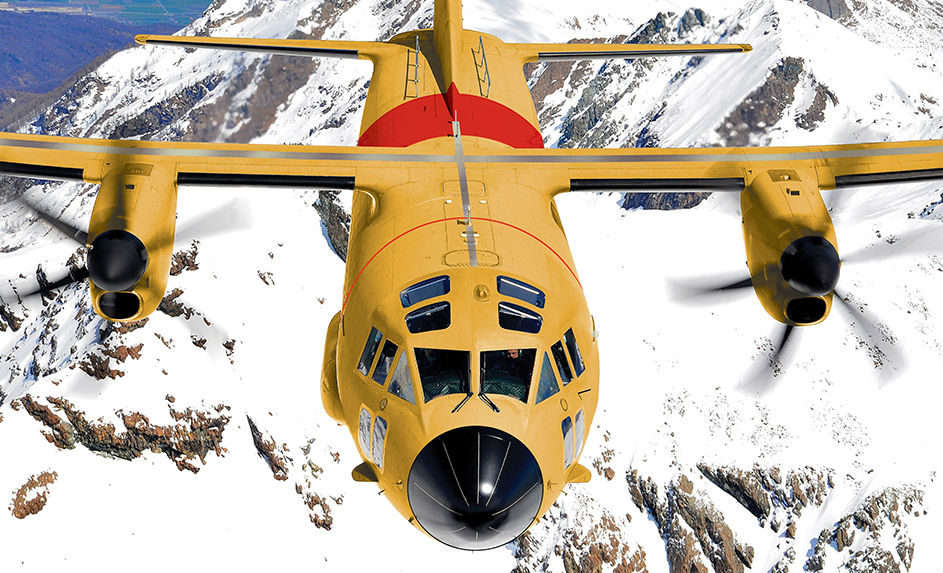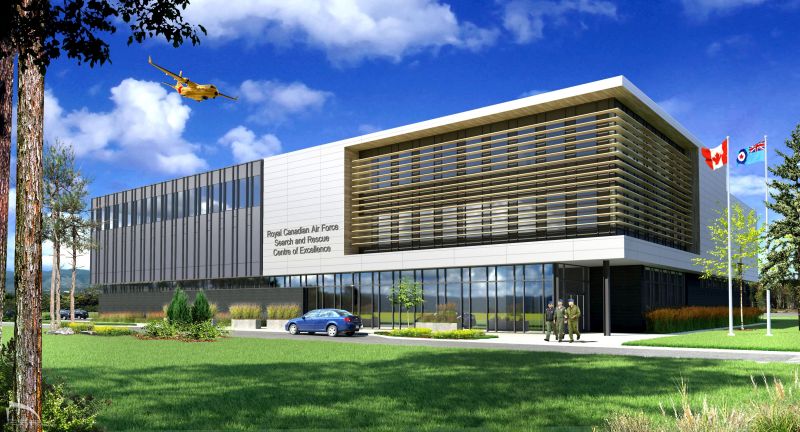Estimated reading time 13 minutes, 7 seconds.
Despite the looming presence of a court challenge, Airbus Defence & Space does not expect any delay to its plan to manufacture and deliver to the Royal Canadian Air Force (RCAF) 16 C295W fixed-wing search and rescue (FWSAR) aircraft and a training centre at 19 Wing Comox, B.C.
![A mixed fleet of CC-130H Hercules and CC-115 Buffalo aircraft have been performing the important FWSAR [fixed-wing search and rescue] role for the past 50 years. Mike Reyno Photo](https://assets.skiesmag.com/wp-content/uploads/2017/05/MHM9863-resized-1024x587.jpg)
In December 2016, Airbus was awarded a two-phase, $2.4 billion contract to replace the RCAF’s fleet of CC-115 Buffalo and CC-130H Hercules search and rescue aircraft, construct a state-of-the-art training centre and provide five years of in-service support. Options for maintenance and support services for an additional 15 years would bring the total value to $4.7 billion.
Molina said the requirements for in-service support and training simulators were being reviewed, a site survey in Comox was complete, and a final design review of the C295W was slated for later this year. A team from the RCAF’s Aerospace Engineering Test Establishment (AETE) in Cold Lake, Alta., recently completed evaluation of the aircraft in Seville, Spain, he added, and Airbus expected to begin cutting metal this summer.

But that early progress could be derailed if Leonardo, manufacturer of a rival aircraft in the FWSAR competition, the C-27J Spartan, is successful in its legal challenge that the federal government failed to correctly apply its own criteria when evaluating Leonardo’s bid.
While the CITT dismissed Leonardo’s complaint on technical grounds, stating that the company does not have standing to file a complaint because it is “not a Canadian supplier within the meaning of the Agreement on Internal Trade,” the federal court case is still proceeding. The CITT did not comment on the merits of Leonardo’s case.
In particular, Leonardo claimed that the C295W failed to meet two critical requirements: the ability to complete all specified missions within 13 flight hours or 15 crew hours; and compliance with applicable airworthiness standards that require back-up electrical power equipment for long missions, such as those specified for search and rescue, in the event of an engine failure.
“The Airbus C295 cannot meet either of these requirements, and this would have been evident to the evaluators from the proposal filed by Airbus,” Leonardo stated in court documents, suggesting that “from an airworthiness perspective, the C295W should have been considered non-compliant.”
The company added that “the C295 could have been part of a solution, but only as one element of a mixed fleet that included aircraft with the required capabilities.”
A senior official with Airbus, speaking on background, said the bidders were required to demonstrate “with performance data” the ability of their aircraft to reach more than 2,500 search and rescue incidents that occurred in the previous five years. However, reaching the farthest points of Canada’s SAR region, including 600 nautical miles west of Vancouver Island in the Pacific Ocean, 900 nautical miles east of Newfoundland in the Atlantic, and to the North Pole, within a single 13-hour crew day, was a rated requirement for which the contenders were awarded points.
The requirements in the request for proposals (RFP) did not impose a limit of 13 hours, he stressed, adding that while a crew may have a limit of 13 hours on duty in the aircraft, that can be extended at the discretion of the aircraft commander.
“The 13-hour limit applies to the crew, not the mission,” he said. “I can say without unveiling our speed that the C295 doesn’t have any problem meeting the North Pole, West Coast or East Coast limits. We comply with that in the same way that the current [RCAF] aircraft are compliant with that.”
LGen (Ret’d) Steve Lucas, a spokesperson for Leonardo and former commander of the RCAF, acknowledged the government’s wording was open to interpretation, but noted that the RCAF, in its August 2016 Future Air Operating Concept, specified that “SAR forces must have the ability to arrive in the vicinity of any SAR incident anywhere within the Canadian SAR [area of responsibility]…within a reasonable amount of time but no longer than one crew day.”
“Essentially what Canada has bought is an aircraft that doesn’t meet the requirements of the commander of the RCAF. That to my mind is significant,” said Lucas in an interview with Skies.
And while previous SAR incidents may be somewhat indicative of future events, he suggested the requirement to reach past search areas might be “looking backwards” rather than ahead as the Arctic climate changes and polar shipping routes open. “I think there is going to be an awful lot more that happens in the coming 25 to 40 years than there was in the years that they chose.”
Leonardo’s other point of contention is a requirement for an independent electrical power system. Since the C295W does not have an auxiliary power unit (APU), the company questioned in its affidavit whether the Airbus aircraft had “suitable backup electric/hydraulic generator capability…should an engine fail during the mission.”

“Our point is that Airbus has the only aircraft in the world that is trying to conduct extended range operations without an APU,” Lucas said. “They have a system, but what that is and whether the government simply said, ‘You’ve got a system, that’s great,’ or whether they went into it and did some sort of investigation, we have asked for that.”
In the RFP, aircraft were required to have “an emergency electrical power system, independent of the normal electrical power generating system, with sufficient capacity to power all systems necessary for continued safe flight and landing.”
But a government official, in an affidavit, stated that while an APU might be one way to be compliant with the specification, “nowhere in the RFP or related documents is there a requirement for an [APU] on the FWSAR aircraft.”
In its CITT filing, Leonardo acknowledged that being compliant for extended twin-engine operations, known as ETOPS, was not a mandatory requirement, but pointed out that many of the mandatory and rated requirements included missions “that will take the [aircraft] far distant from suitable airports, and thus require that the [aircraft] comply with these ETOPS airworthiness standards.”
Both Airbus and the government countered that ETOPS certification does not apply to military planes. ETOPS “was developed by civilian aviation authorities to govern the use of twin-engine airliners on long-range routes with fare-paying passengers,” the government official stated in the affidavit. “The civilian ETOPS regulations were never intended to be applied to military aircraft. To the best of my knowledge, no military authority has mandated ETOPS for military aircraft.”
The senior Airbus official said the C295W does not have an APU “because it increases the complexity of systems [and] increases the possible rate of failure of systems…We have enough power generating sources in the aircraft.”
In its affidavit, Airbus refused to provide specific performance details about the C295W, arguing that both the CITT and court challenges were a means to acquire a competitive advantage in other competitions where the C295W and the C-27J are head-to-head.
“Clearly for them to know our speed, what is the technical solution of our electrical system…will give them a competitive advantage in other procurement processes,” the official said.

Leonardo disputed the idea of a fishing expedition. Lucas noted only a technical expert would see the details of the aircraft, and would not be allowed to disclose those to the company, only the merits of its argument.
“The Airbus claim that this is us trying to find out information that we could use is, I think, ill-founded because the process allows for us to have an understanding without having the actual information that Airbus is interested in protecting,” he said.
Though it was not part of Leonardo’s affidavit to the federal court, the company is also questioning the contract budget. In meetings with government officials before the RFP was released, Lucas said the company understood the $3.4 billion budget to be fairly firm and structured its bid accordingly. When Airbus was awarded a deal valued at $4.7 billion, the company was shocked.
“During those discussions, we never got a hint whatsoever that you could blow the budget by anywhere near the amount that Airbus appears to have,” he said. “We believe that had we had that extra $1.3 billion to work with, our bid could have been a lot better, too. We are very curious as to how this situation occurred and we are looking at our options at this point.”
Lucas acknowledged that $3.4 billion was a “notional” budget for aircraft, a training system and 20 years of in-service support, but he noted that other wording in the RFP suggested the government could reject or reissue the bid if it exceeded the budget.
“When you take all the words that we heard, plus the wording in the RFP about the implications of exceeding the budget, to my mind that’s a strong signal,” he said. “I think we have some good questions and I think we deserve some good answers. The answers we have been given haven’t really met the mark, so we are going to continue to ask good questions.”
The Airbus official countered that the budget was clearly notional and “bids would be accepted if they were higher than it.” Airbus opted to bid significantly higher based on previous experience with similar programs for other customers. Rather than submit a bid it might have to renegotiate later in order to deliver the full system of aircraft, training and support, “we took the risk, consciously trying to provide Canada with the best possible solution, and not to create problems in the future,” he said.
“That is one hell of a big chance,” Lucas observed.
Leonardo might make a further submission to the federal court based on the information it has gathered about the budget, he confirmed.








